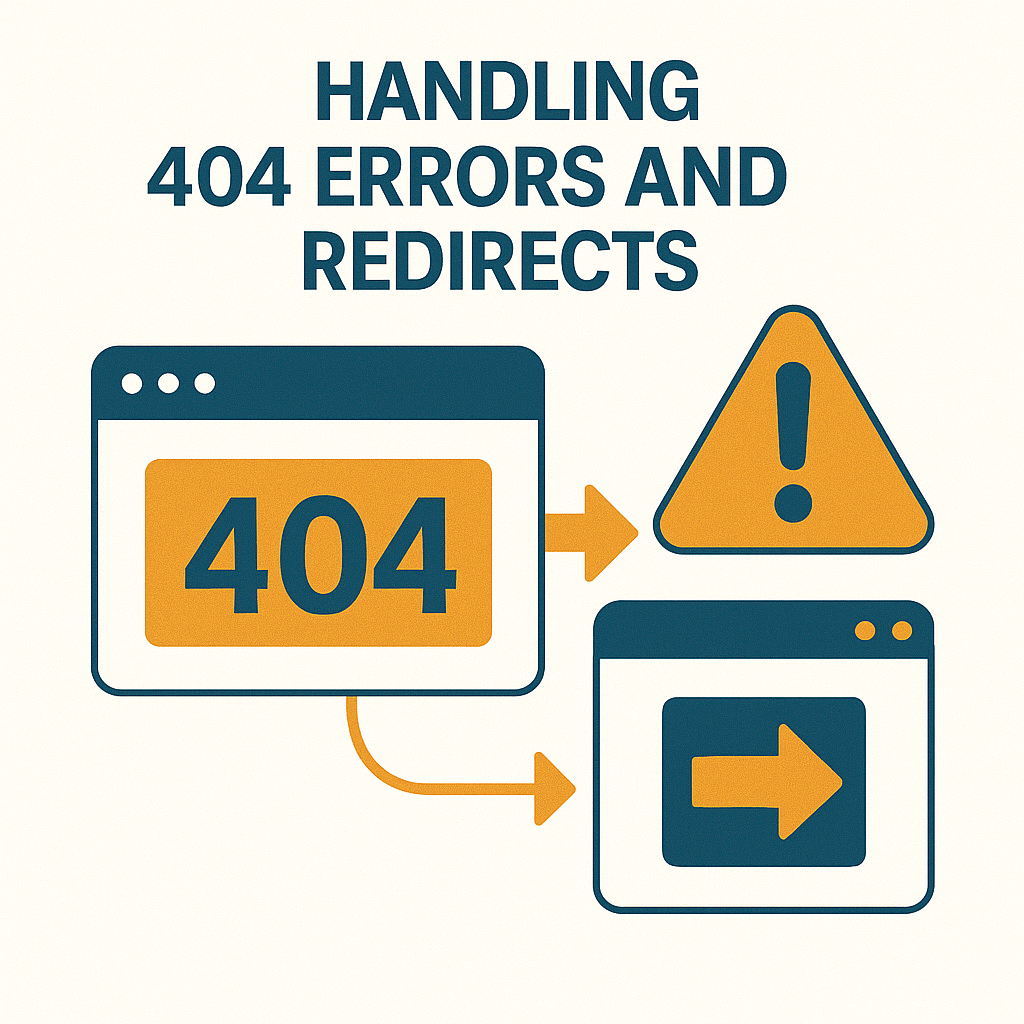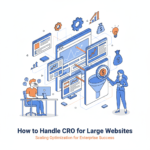
Handling 404 Errors and Redirects: A Complete Guide for SEO, UX, and Website Health
In the digital landscape, 404 errors and redirects are inevitable. As your website grows, content gets moved, renamed, or deleted. Without proper handling, these changes can negatively affect your SEO rankings, user experience (UX), and site trustworthiness.
This guide dives deep into how to effectively manage 404 errors and redirects—from detection and diagnosis to prevention and optimization.
📌 What is a 404 Error?
A 404 error is an HTTP response status code indicating that the server could not find the requested URL.
Common causes of 404 errors:
-
Deleted pages
-
Mistyped URLs
-
Broken internal/external links
-
Incorrect permalinks
-
Improper redirects
-
CMS changes (e.g., WordPress slugs, Shopify migrations)
A 404 error doesn’t necessarily mean your site is broken—but too many 404s that go unaddressed will degrade UX and SEO performance.
🚫 Why 404 Errors Matter
⚠️ Negative Impact on SEO
-
Search engines view excessive 404s as signs of poor maintenance
-
Broken links disrupt crawlability and link equity flow
-
Can cause ranking drops if important pages are lost
👎 Poor User Experience
-
Frustrates users who can’t find what they’re looking for
-
Increases bounce rate and reduces conversion
-
Damages your brand reputation
📊 Affects Analytics
-
Inflates bounce rates and skews engagement metrics
-
Can distort traffic analysis if URLs are entered incorrectly
🛠 How to Find 404 Errors on Your Website
1. Google Search Console
-
Go to: Coverage > Excluded > “Not Found (404)”
-
Shows pages that Google attempted to crawl but couldn’t find
2. Screaming Frog SEO Spider
-
Run a full crawl and filter for “Client Error (4xx)”
-
Useful for large-scale audits
3. Ahrefs / SEMrush / Sitebulb
-
Check Site Audit > Issues > Broken pages / Broken links
4. Log File Analysis
-
Use tools like Loggly or Splunk to analyze server logs for 404s
5. CMS Error Logs (e.g., WordPress Plugins)
-
Tools like Redirection, Broken Link Checker, or Rank Math
🔁 What are Redirects?
Redirects tell browsers and search engines that a URL has moved, and automatically send users to the new location.
🔄 Types of Redirects (HTTP Status Codes)
| Type | Status Code | Use Case |
|---|---|---|
| 301 Redirect | Permanent | Best for SEO, transfers ~90–99% of link equity |
| 302 Redirect | Temporary | Use when the change is not permanent |
| 307 Redirect | Temporary (HTTP/1.1) | Retains method (POST/GET), used for API-sensitive redirects |
| 308 Redirect | Permanent (HTTP/1.1) | Similar to 301 but method-preserving |
| Meta Refresh Redirect | HTML-based | Slower and discouraged for SEO |
🧩 When to Use Redirects
✅ Use 301 Redirects When:
-
Permanently changing URLs or slug structure
-
Migrating to a new domain
-
Consolidating duplicate content
-
Redirecting deleted product/category pages to relevant alternatives
✅ Use 302 or 307 Redirects When:
-
Running A/B tests
-
Temporarily disabling a page
-
Maintaining short-term maintenance pages
❌ Don’t Redirect:
-
To irrelevant pages just to “fix” a 404
-
Every deleted page to the homepage (can harm SEO)
-
Using chains (301 > 301 > 301) or loops (URL redirects to itself)
🛠 How to Implement Redirects (Best Tools)
For Apache (.htaccess):
Redirect 301 /old-page https://www.example.com/new-page
For NGINX:
rewrite ^/old-page$ https://www.example.com/new-page permanent;
WordPress Plugins:
-
Redirection (most popular)
-
Yoast SEO Premium (auto-suggestions)
-
Rank Math (built-in redirect manager)
Shopify:
-
Online Store > Navigation > URL Redirects
Magento:
-
Marketing > SEO & Search > URL Rewrites
Headless CMS / Custom Stacks:
-
Use server-level redirects (Netlify
_redirectsfile, Cloudflare Workers, etc.)
💡 Best Practices for Handling 404s and Redirects
✅ 1. Create a Custom 404 Page
Design a user-friendly, branded 404 page with:
-
Search bar
-
Popular links
-
CTA to homepage
-
Humor or personality
Example: “Oops! This page wandered off… but here’s something better.”
✅ 2. Monitor and Fix Broken Links Regularly
-
Schedule monthly crawls
-
Set alerts for new 404s in Google Search Console
-
Fix internal broken links immediately
✅ 3. Use 301 Redirects Strategically
-
Always redirect deleted pages to contextually relevant pages
-
Preserve SEO value by pointing to equivalent or category-level content
✅ 4. Avoid Redirect Chains and Loops
-
Too many hops slow down the site and dilute link equity
-
Always redirect directly to the final destination
✅ 5. Update Internal Links
-
After migration or URL change, fix all internal links to avoid unnecessary redirects
-
Use relative links in CMS when possible
✅ 6. Use Canonical Tags Properly
-
Prevent duplicate content when multiple URLs serve the same page
-
Helps Google consolidate ranking signals
🔍 Redirect Audit Checklist
| Item | Status |
|---|---|
| Are all deleted pages redirected appropriately? | ✅ |
| Do redirects go directly to the final destination (no chains)? | ✅ |
| Is there a custom 404 page with helpful links? | ✅ |
| Are old backlinks redirected to relevant pages? | ✅ |
| Is Google Search Console regularly checked for new 404s? | ✅ |
| Are redirects using 301 (not 302) for permanent changes? | ✅ |
📊 Measuring the Impact of Redirects & 404 Fixes
Use tools like Google Analytics, GSC, and Ahrefs to track:
-
Change in traffic to redirected pages
-
Recovery of keyword rankings
-
Crawl errors decline over time
-
Bounce rate improvements
Set up event tracking for your 404 page to see how many users land on it and what they do next.
🧠 Common Redirect Mistakes to Avoid
| Mistake | Impact |
|---|---|
| Using 302 instead of 301 for permanent changes | SEO signals not passed |
| Redirecting all broken URLs to the homepage | Poor UX, thin content penalty risk |
| Redirect chains (multiple hops) | Slower load time, SEO signal dilution |
| Ignoring mobile-specific redirects | Inconsistent user experience |
| Not fixing broken internal links | Wasted crawl budget, poor navigation |
🏁 Final Thoughts
Handling 404 errors and implementing redirects is both a technical and strategic task. When done right, it protects your site’s SEO health, keeps users happy, and maintains brand trust.
Think of 404s and redirects not as errors, but as opportunities to guide users and search engines in the right direction.
Author



